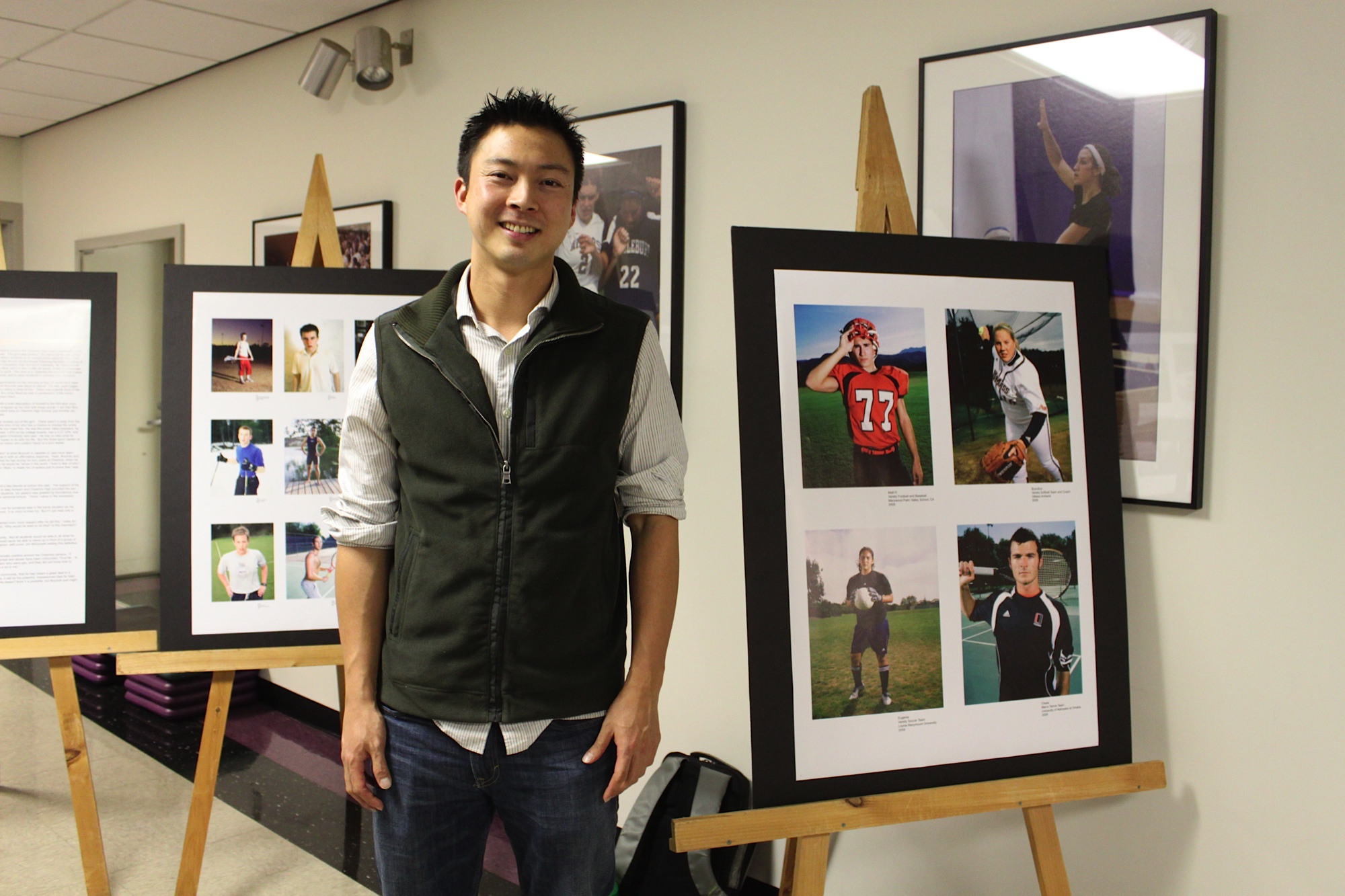

Why do we want our photographs taken? In this world where time inevitably passes, it is impossible to keep anything but a vague memory of the things that are not happening to us in the moment. We don’t even remember the exact taste of the last meal we had, or how we felt five minutes ago. When exactly were you happy in the past month? Hanging out with friends on some couch of some common room of some floor, a walk under clear skies, seeing that beautiful tree with its leaves half-turned that was spared by the storm — these moments may as well have been imagined, so distant we are to them. What about the difficult moments in your life or the moments of self-triumph that no one knows occurred but you? As proof that these moments have occurred, that the events in our memories have happened not merely in our mental and emotional landscapes but also in some tangible, visible world, we crave photo documentation.
This is why Jeff Sheng’s photography project, “Fearless,” is so important. Sheng, a professional photographer whose photography has been published in the New York Times Magazine, Newsweek and Time Magazine, brought his exhibition to the College last Thursday and spoke to students about his experiences combining social activism and art. An ongoing project that Sheng began in 2003, “Fearless” documents high school and collegiate athletes who openly self-identify as lesbian, gay, bisexual or transgender and are “out” to their predominantly straight teammates and coaches.
The photographs are beautifully colored and have obviously been taken by a skilled photographer. It is, however, not the quality or composition of the photographs that is the most important element of the series, but rather, what photography means to the subjects. These photographs are proof — acknowledgement, even — of the struggles and triumphs of gay athletes who are out. In taking pictures of them, Sheng proves to the athletes that their personal struggles are worthy of being seen and respected by the public. He makes their experiences tangible through his work. Years from now, when ‘gay athlete’ may no longer fit into their description of their self-identity, the photographs will be reminders that the term once played a part in defining them. In addition, in participating in “Fearless,” these athletes “out” themselves to the world as non-straight athletes who are proud of the struggles they have surmounted. They indiscriminately and bravely show everyone who looks at these photos who they are, whether the person is accepting or homophobic.
One tremendous failure of photographs as a means of documenting our lives is that more often than not, we are aware of the camera. As such, we exaggerate our expressions for the camera. We are caricatures of our real selves. Picture after picture is filled with the same fake, exaggerated smile — paltry attempts to remind ourselves later of how much fun we were having at the moment the pictures were taken. Only once in a while is there an unexpected candid photograph that captures the moments we truly secretly wish were captured more often: the glance that we thought was private, the open-mouthed laughter, the focused expression of reading a good book. If only each of us had a photographer that followed us around and visually documented our most natural moments!
Incidentally, the element of “Fearless” that shines through most is Sheng’s ability to conquer this common failure. The athletes in Sheng’s photographs do not have expressions or postures that appear contrived. During the talk he gave at the exhibit, Sheng mentioned that he had difficulty achieving this effect in his photos: as soon as the subjects were aware of the camera, they would create some sort of predetermined expression that they thought was suitable. However, by utterly exhausting the athletes in their chosen sport while snapping photographs, Sheng was able to eliminate this hyper-awareness of the camera even as he made each of them stare straight at it. The honest, direct gaze of each athlete at the camera lens in Sheng’s final product is a testament to the stares they have received over the years and an indication that, despite this, they are not afraid to be open with people.
This exhibit, however, is not merely for athletes who openly self-identify as lesbian, gay, bisexual or transgender to show the world that they are out and proud, but also for the rest of the community to become more aware of their presence. Pamela Stawasz, the coordinator of the College’s LGBTQIA student services and support, stated that the reason the Pride Alliance decided to invite Sheng to the College was because a student in the Alliance had seen the exhibition at her high school and wanted to bring it to the College. The student, also a female athlete, made the statement upon first arriving at the College that it was easier to be out in high school than it was at the College and mentioned that she felt a lot of homophobia in athletics. If this is indeed the case, people must become more aware and accepting of the presence of non-straight athletes at Amherst. Gay athletes at the Amherst do exist — in fact, five or six of them will be photographed for the project. If they are “Fearless” enough to show their pride in their identity to the world, then the College as a collective whole must work hard to prove that ,in their fearlessness, they are correct.